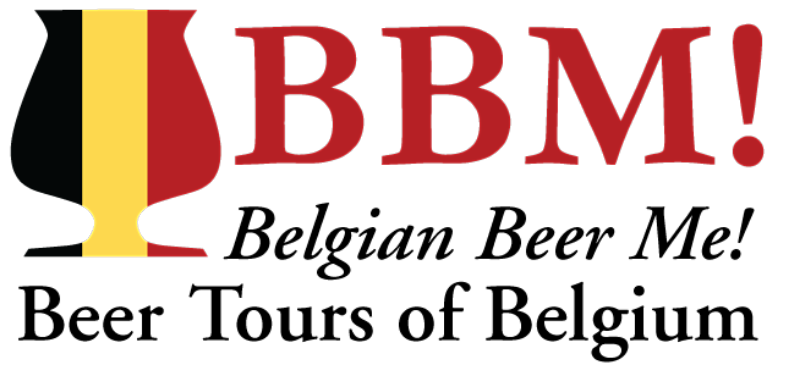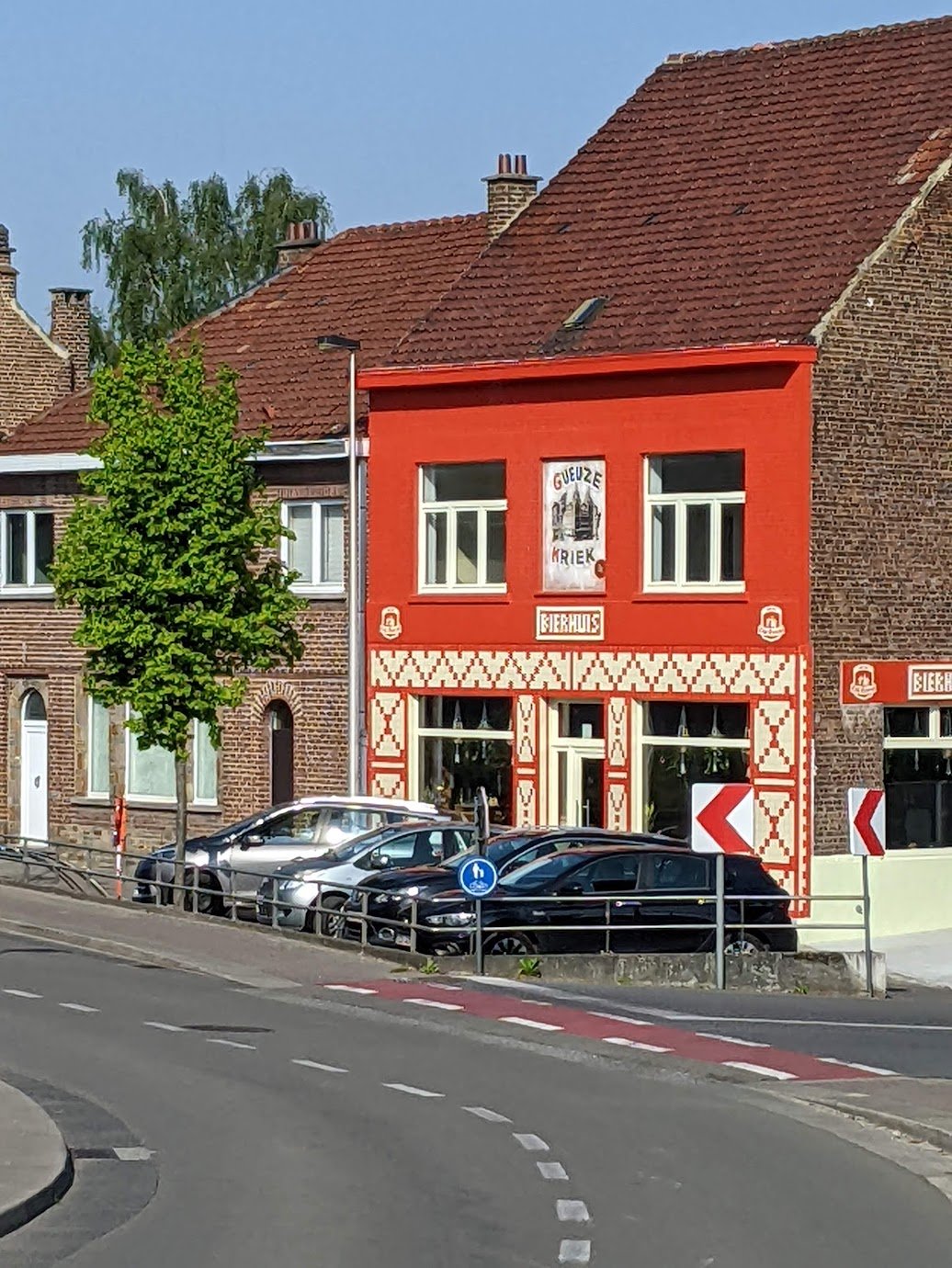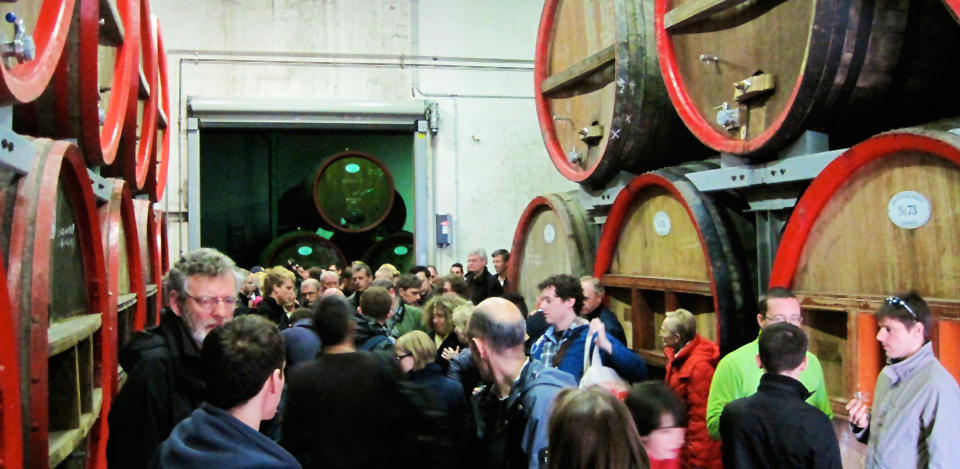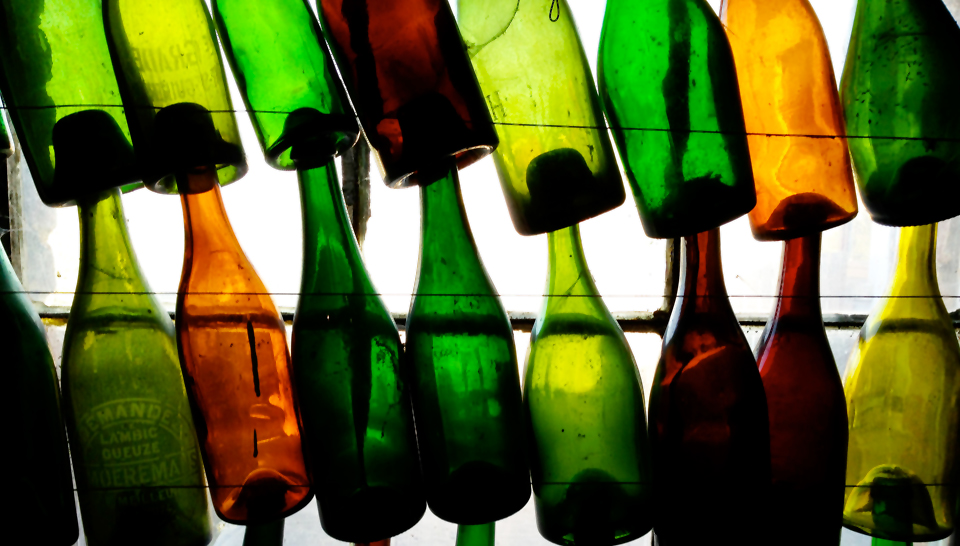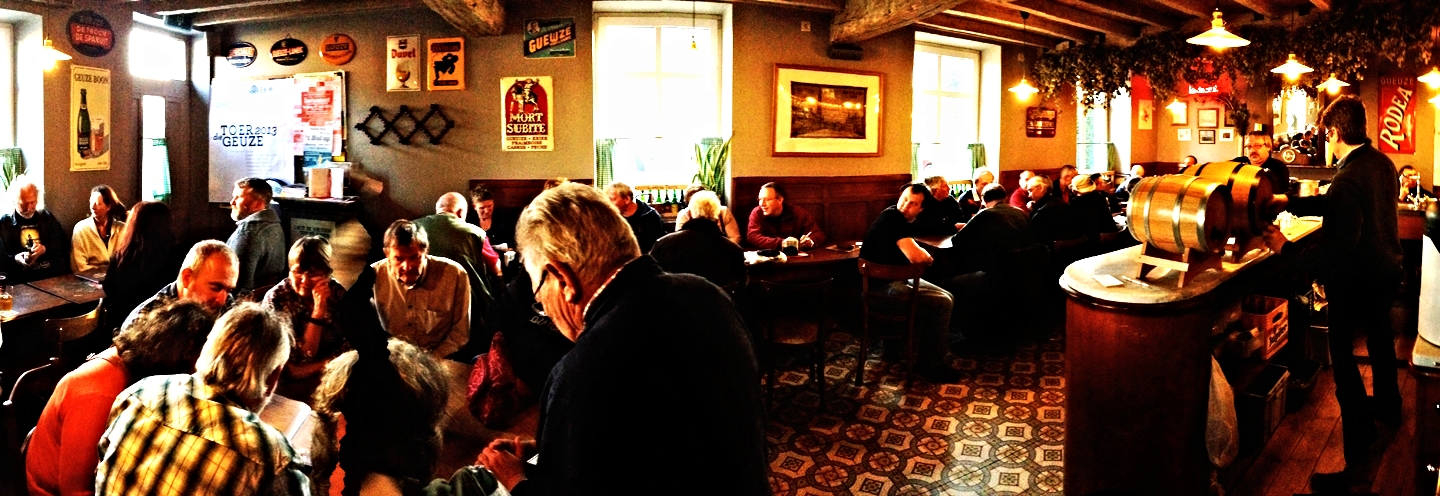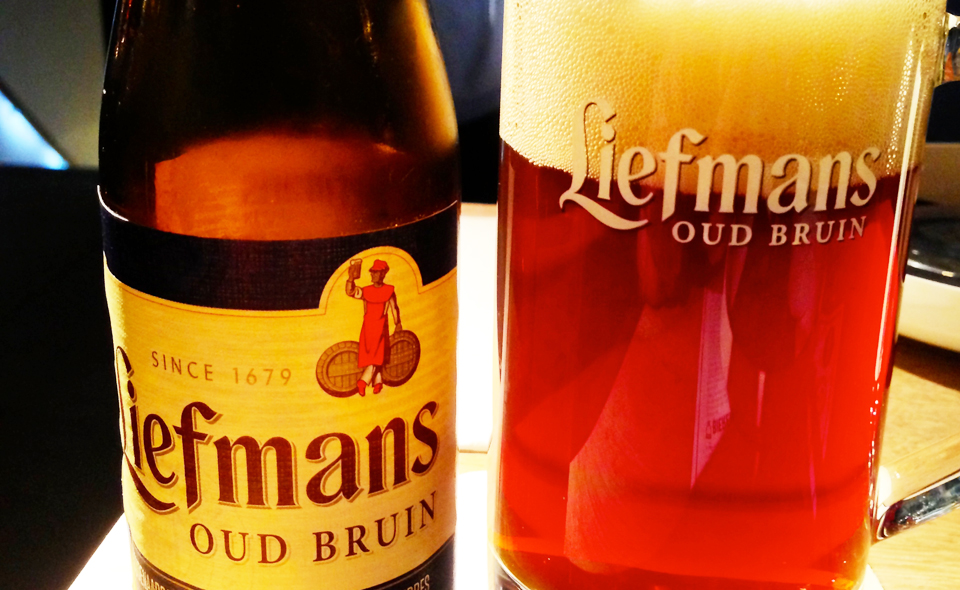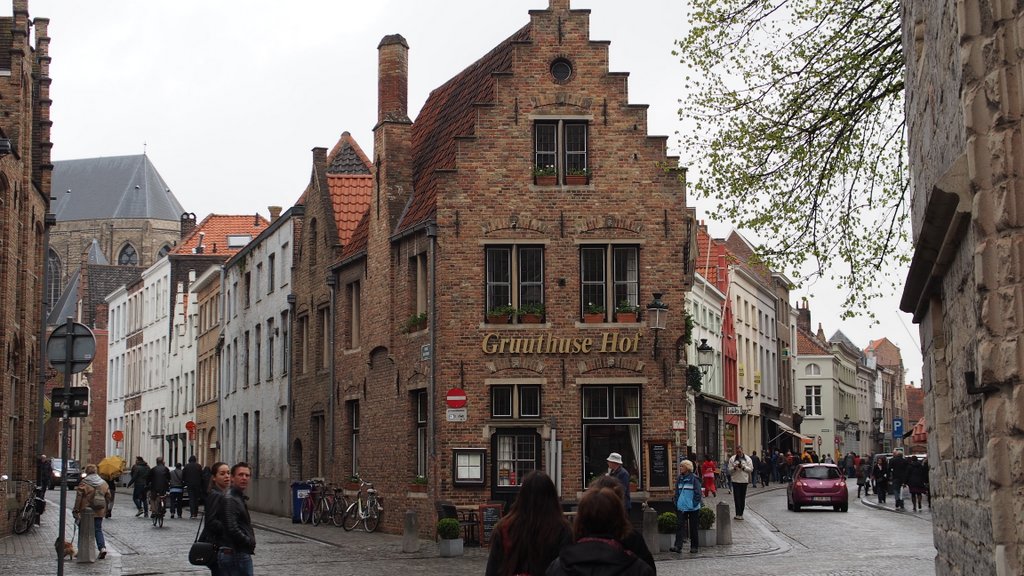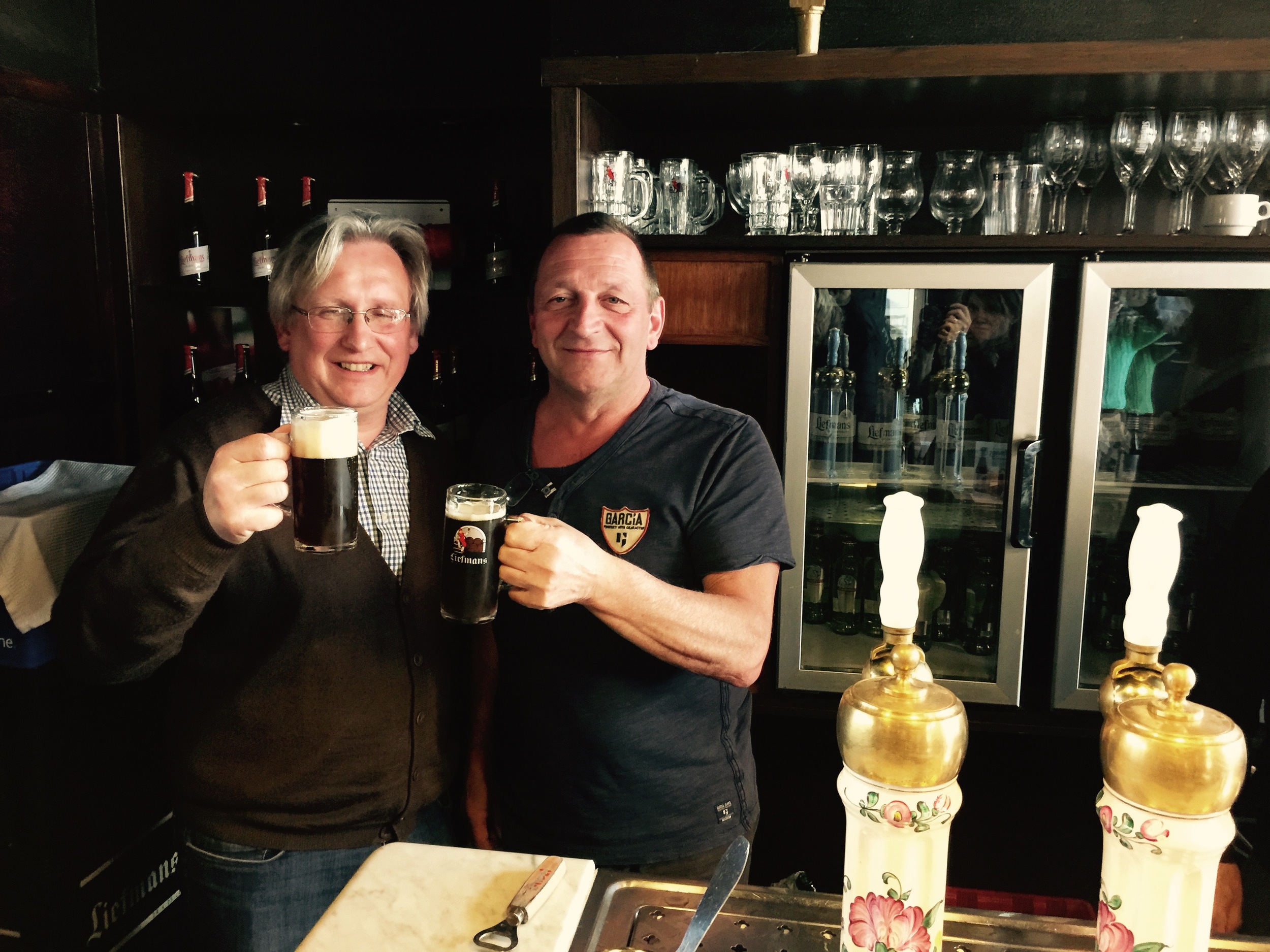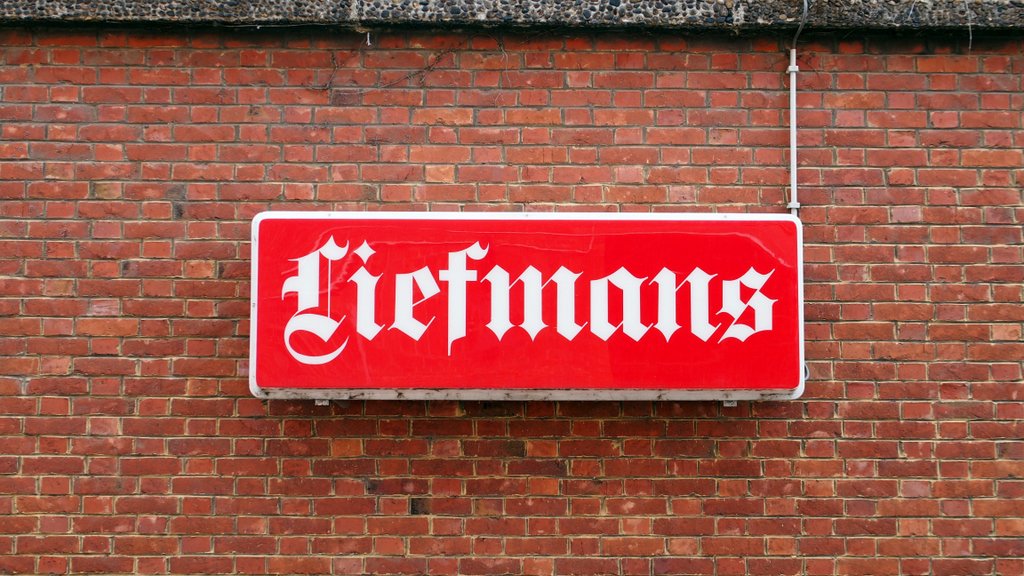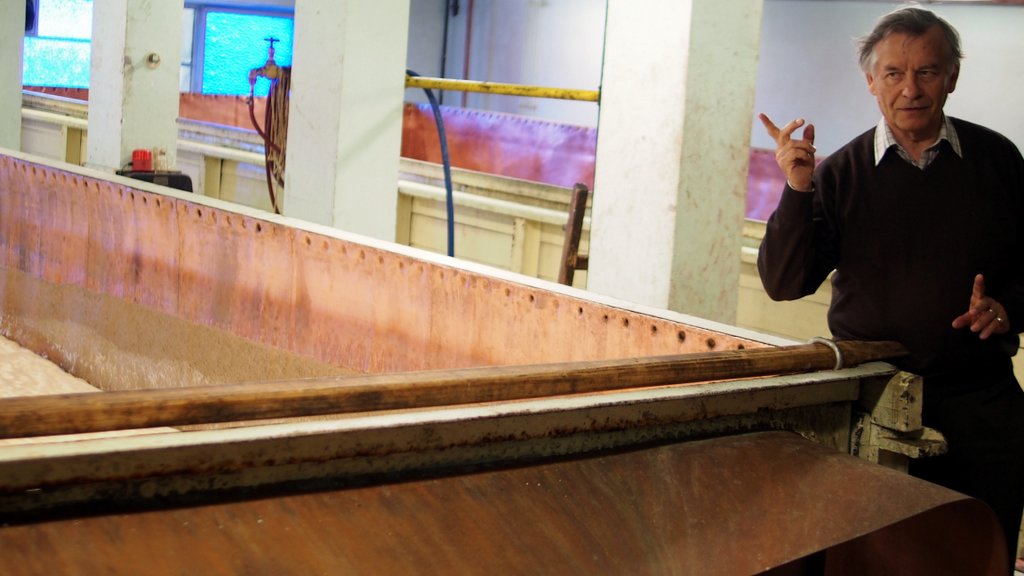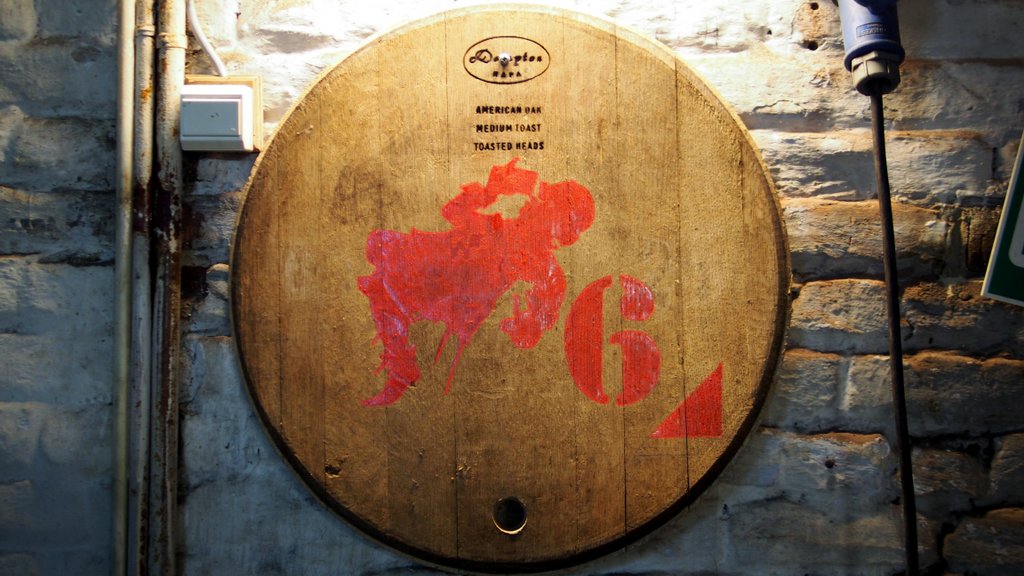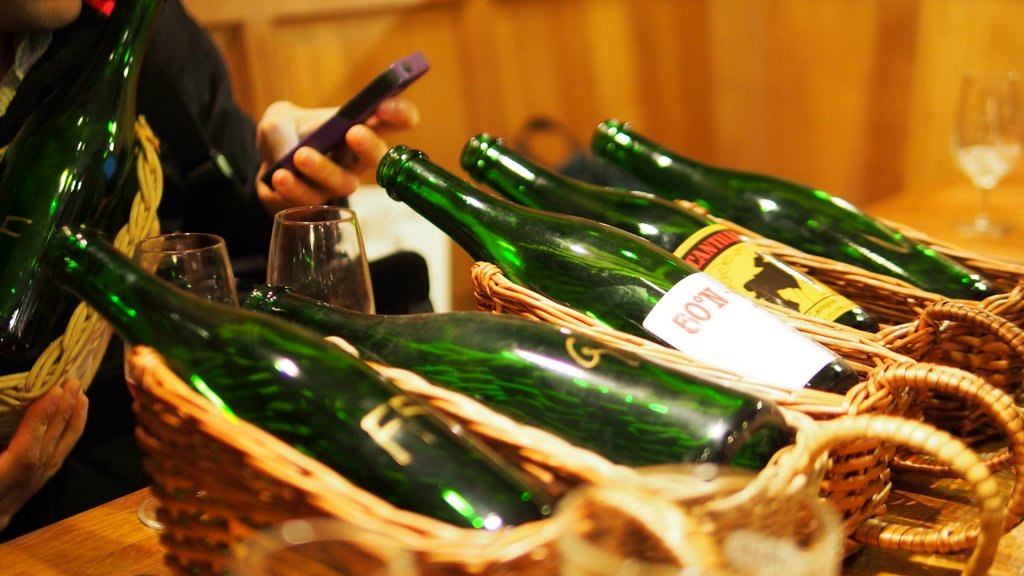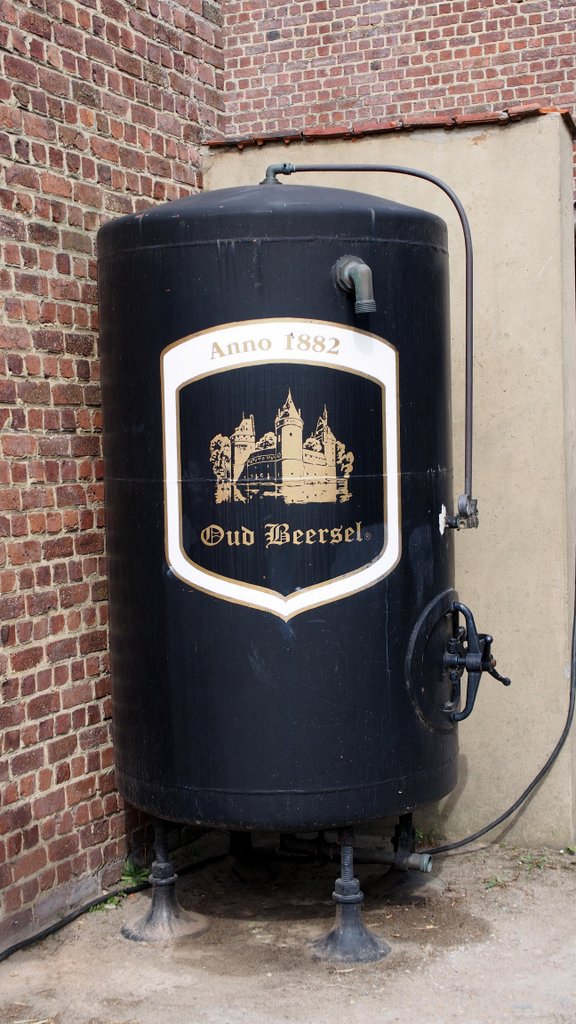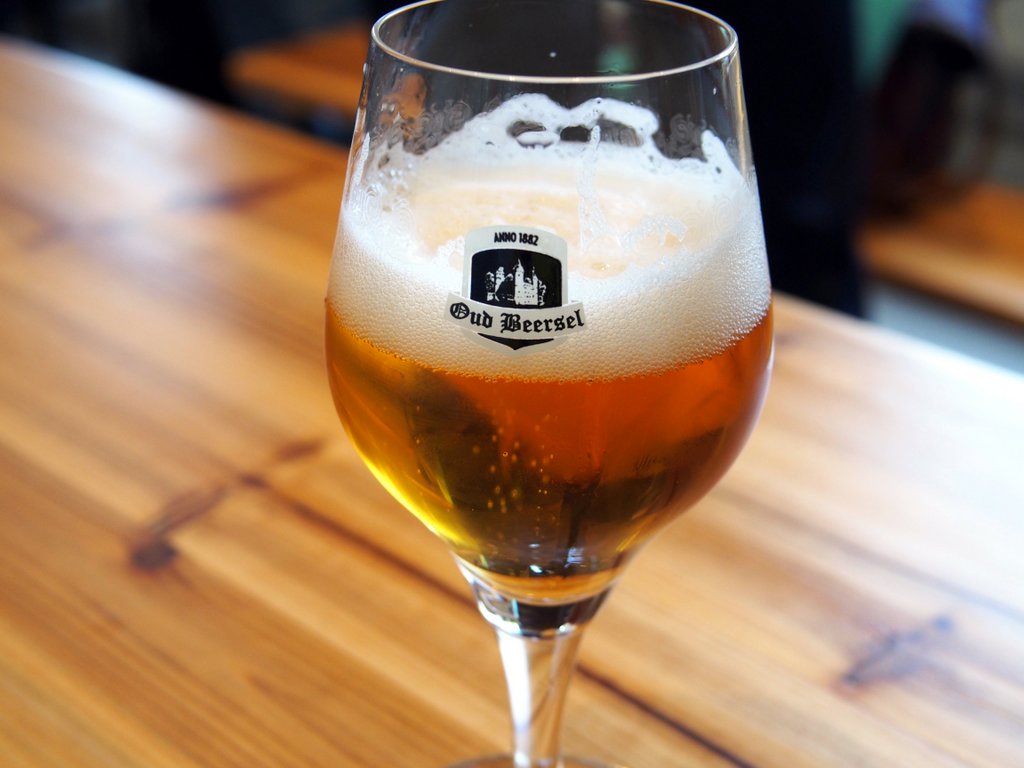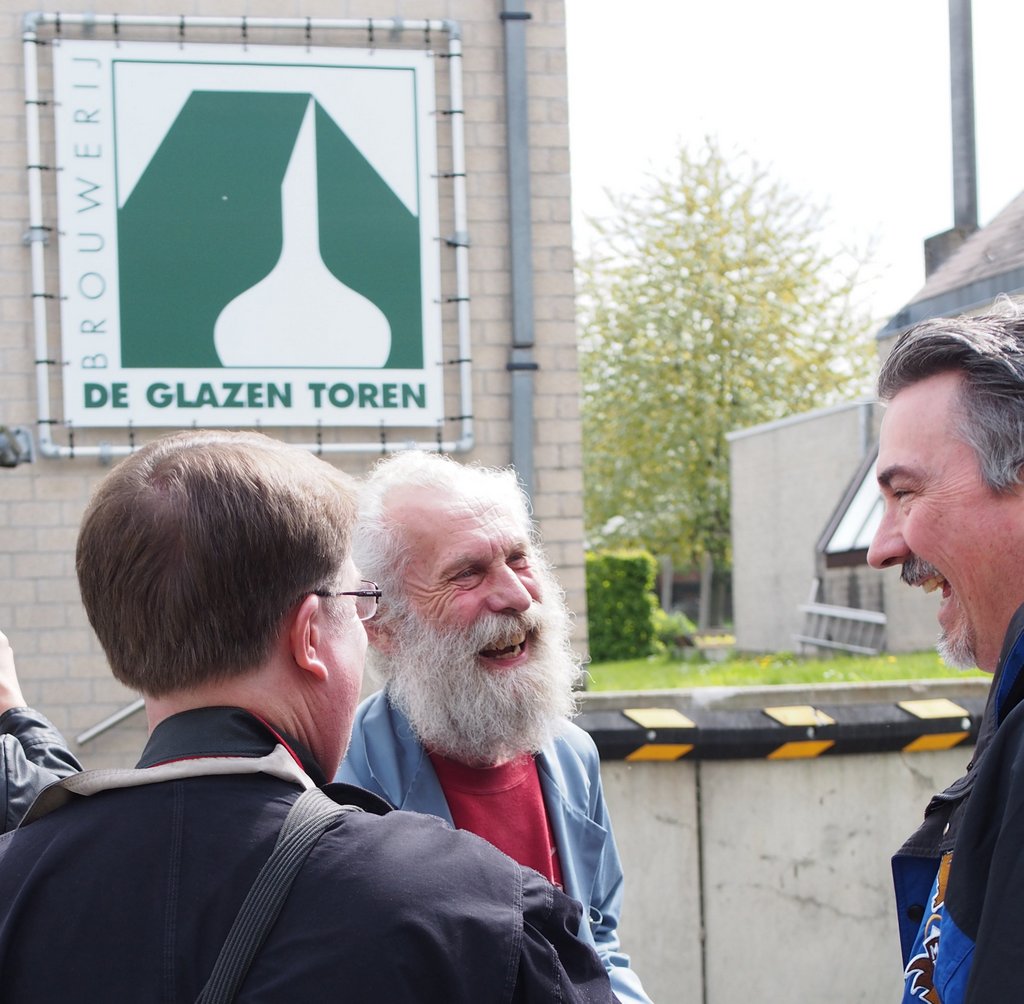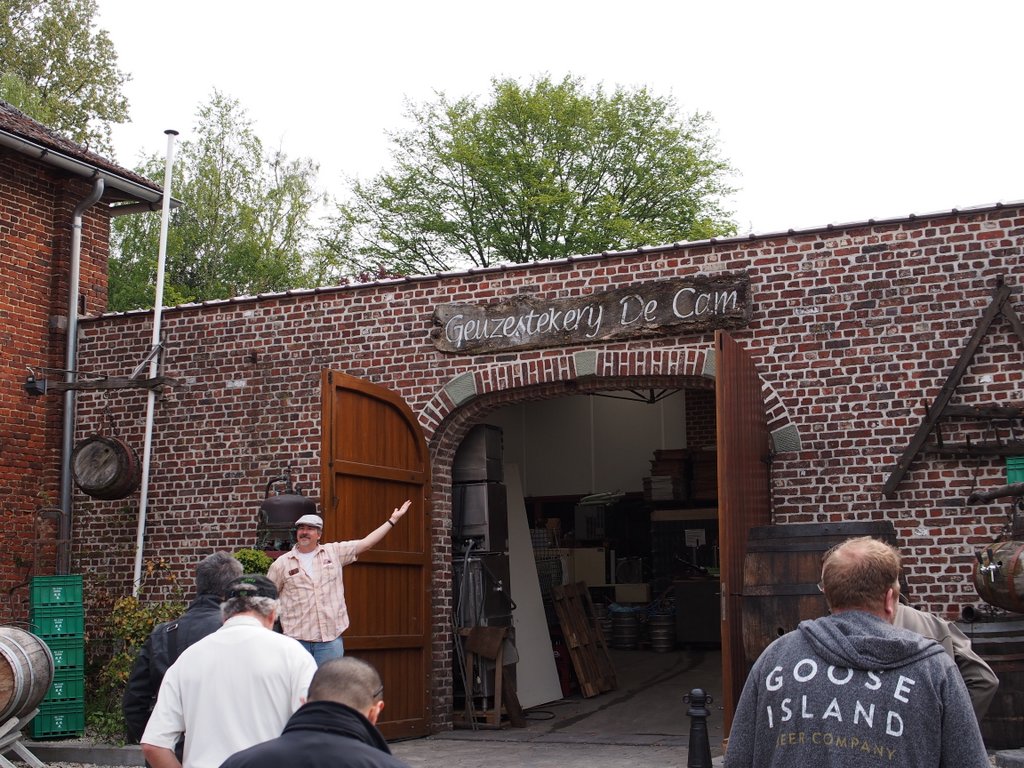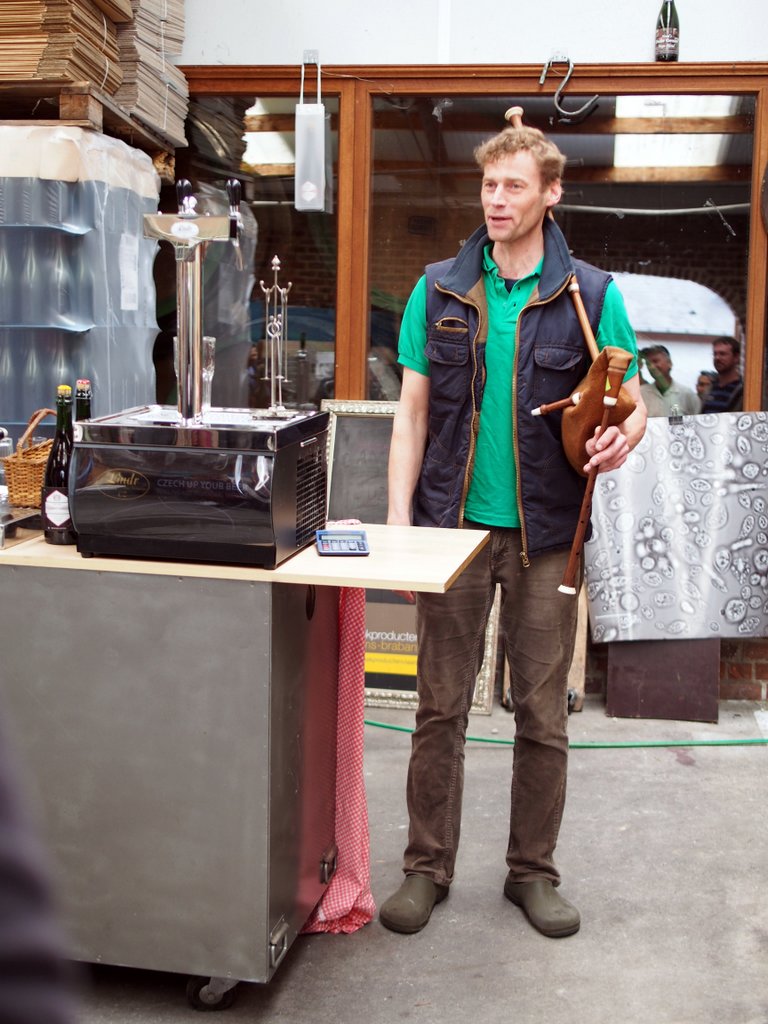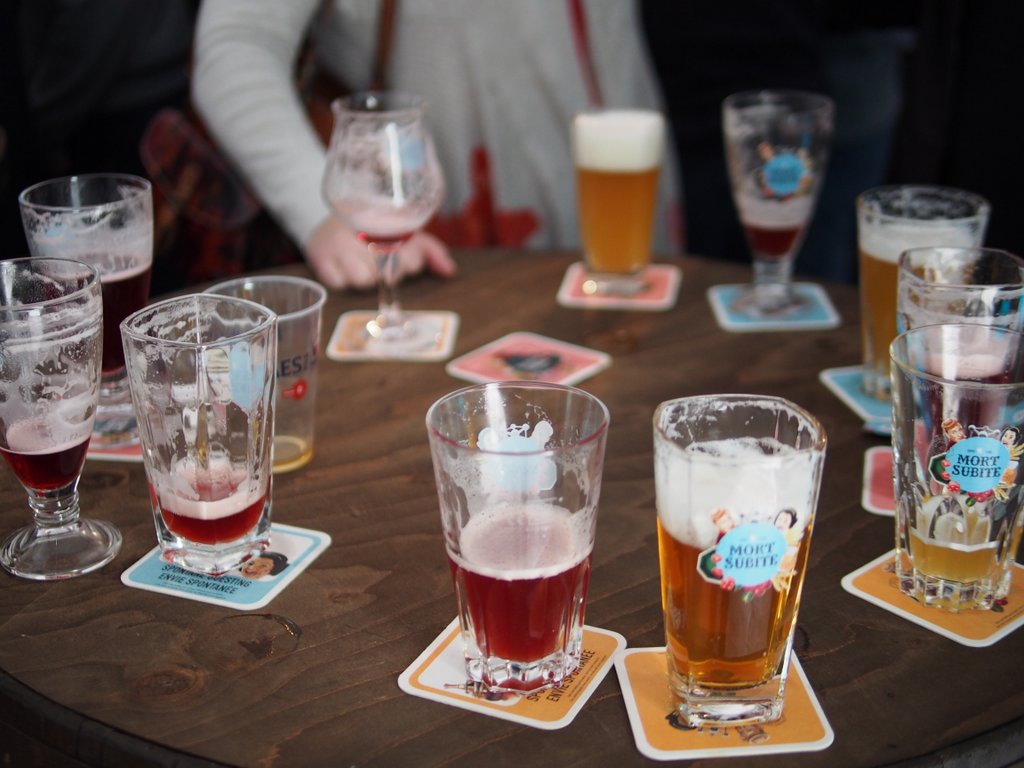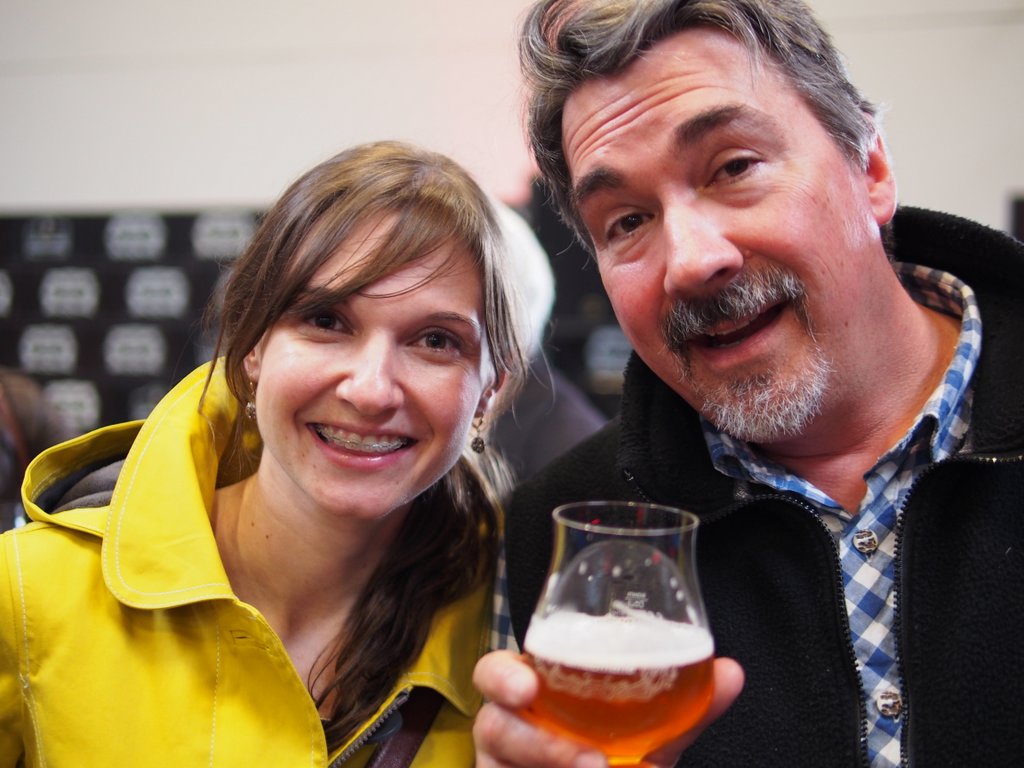The Wild & Spontaneous Beer Tour of Belgium
Eight days, seven nights. | One DEPARTURE A YEAR
• April 27-May 3, 2026
Lambic, geuze, kriek, faro, Flemish Red Ales (think Duchesse de Bourgogne) and Brown Ales (think Liefmans). It’s a small, but enthusiastic segment of the beer-loving population who enjoys these special mysterious brews and this group is expanding more and more each day. Some Americans call these "sour beers." If you are reading this, you likely already have these beers on your radar and have a basic understanding of them.This tour will take you to the next level in the heart of the Payottenland, an area southwest of Brussels and in the Flemish Brabant Province of Belgium.
This tour will include the HORAL’s Toer de Geuze (TDG). There are now at least 13 members of HORAL (The High Council of artisinal lambic beers). While it’s not feasible to visit all of them in two days, we’ll visit some of them leading up to TDG and likely at least three each day of TDG. From past experience, it’s better to enjoy your time at each stop, rather than race around spending more time driving than enjoying the breweries and blenders.
“Lambic is a spontaneously fermented beer brewed in the Pajottenland region of Belgium. Its derivatives consist of a variety of styles and has a variety of characteristics: Old and young, carbonated or flat, blended, fruited or unfruited, and sweetened or unsweetened. Its unique history, traditions, brewing, and fermentation process makes it like no other beverage in the world.”
While all spontaneous beers are wild, not all wild beers are spontaneously fermented.
There’s a lot to know about how these beers are produced and the whole history of it and process is fascinating. Gaining an understanding of behind-the-scenes of these special beers will make you appreciate them even more and cause you want to explore even deeper.
The exact places we will visit will vary depending on the schedules of the brewers and blenders, but rest assured you will be satisfied in in our sorties into this uniquely Belgian beer world. We will also explore Flemish Red and Flemish Brown Ales, which are in a wild beer league of their own and employ different techniques to achieve their enjoyable flavors, as opposed to lambics.
We’ll overnight in the heart of old town Bruges for two nights and for five nights near Halle at Martins Red Hotel, home of the Belgian Red Devils national football team.
Preview of coming attractions
We will also visit De Lambiek Lambic living history center and eat and drink at some of Belgium’s finest atmospheric beer cafes specializing in Lambics, geuze and Flemish Ales.
All this combined with the bucolic landscape, palpable history and fine cuisine of Flanders makes for a memorable beer tour. Join us, won’t you?
““Thank you Stu for such an incredible trip to Belgium. We not only got to visit more breweries than we could ever have hoped to see on our own, but we really appreciated your attention to every detail regarding not only the brewery visits, but your food selections, beer recommendations and those extra special opportunities to find new experiences that weren’t necessarily planned. We loved every moment, including getting to know so many other beer explorers. We can’t wait to go on another BBM! Tour!””
Tours Include
Seven nights accommodations in nice, friendly, hotels. Two nights in the Old Town of Bruges and five at Martins Red Hotel near Halle, southwest of Brussels in Lambicland.
All breakfasts and four dinners with gratuities.
Beer during brewery tours, taproom visits, and company meals as listed on the itinerary.
Ground transportation via private luxury coach with professional driver. Leave the driving to us!
Professional and courteous BBM! guide services.
All tours and admissions.
An instant group of interesting and fun, beer-loving friends you haven’t met yet.
Guaranteed tour price the moment submit your deposit.
Plenty of unstructured free time to relax, shop and explore on your own.
Custom BBM! name badges.
Souvenir BBM! luggage tags
Flexibility in the event you need to transfer or cancel your tour.
[ back to top ]
Not Included
Airfare
Airport transfers.
Some meals and beer on your own. Free-time sightseeing.Our guides are available to provide suggestions.
Beer at Toer de Geuze.
Brasserie Cantillon in Brussels. If you want to visit here, I suggest you visit before or after the tour.
Fine Print: You are responsible for the costs of your free-time sightseeing. Be sure to read our Terms & Conditions Agreement for important details.
Gratuities, at your discretion, for brewery tour guides and coach drivers.
[ back to top ]
Tour Cost
Deadline to sign up is one month before departure.
$3395/per person + Air, $625 single supplement*
* Prices based on double room occupancy. If you are a solo traveler and would like to have a private room all to yourself there is a single supplement fee of $625 in addition to the base price of $3395 per person. We can also work with you to pair you with other single travelers to avoid the single supplement. Better yet, recruit a friend to come, too! Unless, of course, like Rick Steves says, you prefer to “snore alone.”
We require a minimum number of guests for each tour to be guaranteed to go, so it’s important to sign up ASAP, as opposed to waiting until the deadline. Also, tours can fill rapidly and suddenly, so signing up early ensures that you will go and not be disappointed.
Please share BBM! tours with fellow Belgian beer enthusiasts, your friends in general, and encourage them to join the fun!
map of overnight locations
[ back to top ]
SOME OF THE BREWERIES AND ATTRACTIONS WE HAVE VISITED ON THIS TOUR IN THE PAST:
3 Fonteinen
Rodenbach
Liefmans
Boon
Brewery Contreras
Oud Beersel
De Cam
Lindemans
Hanssens
De Troch
Mort Subite
Tilquin
Cantillon
Timmermans
Lambiek Fabriek
De Lambiek Lambic Museum
Museum at De Cam
Slaghmuylder
Van Honsebrouck
Verhaeghe
Oud Maalderij
Kestemont
Den Herberg
Het Boerenerf Eylenbosch
Eylenbosch
Sako
Bourgogne des Flandres
De Cort Distillery
Toer de Geuze
[ back to top ]
Wild & Spontaneous Beer Tour Itinerary 2026
This tour begins at 1 p.m the Martins Brugge Hotel in Bruges, and ends at the modernistic Martin’s Red Hotel near Halle. We plan to visit many brewery locations, and or taprooms: Trappist Westvleteren, Kastelmont, Eylenbosch, Lefebvre, 3 Fonteinen, De Cam, Boon, Lindemans, Tilquin, Timmermans, Oud Beersel, Den Herberg, Rodenbach and Bourgogne des Flandres. Highlights will include two days of the Toer de Geuze (TDG), De Lambiek Lambic Visitors Center and the De Cort Distillery. This will be the fourth time most of the participants of TDG will be open for two days. This will allow for a more leisurely and enjoyable pace.
Day One, Mon., April 27 • Bruges 1 p.m the courtyard of the Martins Brugge Hotel, in romantic Bruges.We’ll have a walking tour of the city followed by our Welcome Bottle Share. Dinner is on your own and the evening is free to explore the many attractive beer cafés in the city. You’ll be provided with Stu’s Guide to Bruges Beer Cafes.
Day Two, Tues., April 28 • Bruges You’ll have free time this morning to explore the city and visit some shops. Lunch is on your own. I suggest the taproom of Brewery de Halve Maan. We’re not visiting this brewery, so this is a good chance to sample their beers at the source, enjoy some excellent food and visit their gift shop. They have regular tours each morning that you can sign up for on your own. I suggest registering online in advance to guarantee a place on the tour.
At 1:15 p.m. we meet in the lobby to tour the Bourgogne des Flandres Brewery at 1:30 and have a custom blending session. Our tour guide, David Tonnard, is a brewer, the site manager, and a very interesting and knowledgeable guide. This brewery had been in the works for more than 7 years and opened in March of 2016. Several years ago, they created a blend of Timmermans lambic and Guinness. Look for it in their gift shop. The rest of the day is free to enjoy Bruges. Dinner is on your own. (Breakfast)
Day Three, Wed., April 29 • Halle Morning is free to enjoy Bruges. At 10 a.m. we promptly load up the coach and say farewell to this brilliant city. Lunch is on your own today at the home of Trappist Westvleteren beers, the Abbey of St. Sixtus and its brewery tap, “In de Vrede,” (In the Peace). You’ll indulge in their famous, exquisite and rare beers. The abbey and brewery are not open to the general public, however, we will be able to see the exterior and if we are lucky buy some beer to go in their gift shop.
We depart promptly at 1:30 for our next stop, Brewery Rodenbach, home of an entire line of Flemish Red Ales. By now they will have just completed the renovation of the taproom and cafe. We’ll likely be one of the first groups to visit it. We’ll have a 2:30 p.m. tour and tasting here and learn more about this historic brewery with our celebrity guide. Afterward, you’ll have a company dinner at the new Rodenbach cafe. Then it’s on to our home for the remainder of the tour, the stylish Martin’s Red Hotel near Halle, home of the famous Belgian Red Devils training facility. This is also the hotel where the team stays while training. With this as our base we’ll be an easy driving distance to the lambic brewers and blenders we’ll be visiting the rest of the week. Less time driving and more time doing
After dinner and time permitting, we’ll load up the coach and visit ‘t Parlement beer cafe in Halle. (Breakfast & Dinner #1)
Day Four, Thur., April 30 • Halle Morning begins as we meet at 8:30 a.m. in the lobby for a 9 a.m. visit to De Lambiek Lambic Visitors Center in Alsemberg. “The center immerses the visitor in the flavors, aromas, sounds and textures of Lambic beer. With its welcoming, spacious and stylish interior, the center has a charm all of its own. Start your voyage of discovery here in the world of Lambic brewing, Gueuze blending and explore the wider region around. Lambic is a beer that ferments spontaneously and matures in wooden casks. Optimum conditions for this spontaneous fermentation only occur in the Senne Valley and Pajottenland. Lambic beer provides the basis for the traditional Gueuze and Kriek beers.” We’ll see a movie, view some exhibits then sample some lambics in their cafe.
Members of the HORAL contribute lambic to make a special Oude Gueuze called HORAL Megablend 2026. You’ll be able to buy this at the Lambiek Visitors Center and along the way at breweries while supplies last. My advice is buy it when you first see it.
Next, it’s on to the second location of 3 Fonteinen (3F) in Lot, Belgium, for a 10 a.m. tour and tasting. This massive complex is located in a former dairy ice cream warehouse. It features blending, barrel-aging, bottling, a shop, a Schaarbeekse cherry orchard and the Lambik O Droom cafe. As you may know, our usual host for this visit, the very endearing brewer/blender Armand Debelder, died of cancer in 2022. He had made a name for himself through the years as one of the lambic rock stars and his legacy continues with the current brewer and blender Michael Blancquaert. I’m certain our guide today will be a fine ambassador of 3F.
Then we’ll transfer to the newish cafe of Oud Beersel called the Bierhuis Oud Beersel for lunch. We’ll also visit their brewery shop. They also make what I consider to be one the best tripels in Belgium, Bersalis Tripel. Oud Beersel was established in 1872. In 2005 Gert Christiaens, took over and has turned the company into one of the lambic stalwarts. Gert also serves as the president of HORAL. Bierhuis Oud Beersel Bierhuis had closed in 2002, then became a flower shop until 2017. Gert was able to acquire the space and after a hefty renovation reopened the Bierhuis in 2022. The results are magnificent as you’ll see.
Afterward, we’ll head to HORAL’S newest member since January, Brewery Kestemont for a tour and tasting. Owner Francis Kestement likes to tell the story, “Once upon a time, a man came home from work and uttered the following, ‘I just bought a brewery.’ And what a brewery it is!” Located in a rustic old brewery building, this is the former location of Brewery Goossens, which closed in 1968. Brewery Kestemont is run by Francis’ son Lias Kestemont and Wim Krieckemans (brother-in-law), both in their late 30s. They sourced their first wort from Den Herberg and installed their own brewery in 2021. They offer certified organic Oude Geuze, Oude Kriek, Oude Schaarbeekse Kriek and Oude Lambiek. This will be a fun and exciting edition to this tour!
Aftward, we’ll have a very special dinner at 3 Fonteinen Restaurant in the village of Beersel. You will have pre-selected salmon, pork stew or a veggie dish. It is run by Armand Debelder’s nephew Thomas Debelder and his parents. (Breakfast & Dinner #2)
Day Five, Fri., May 1 • Halle
This morning will be a casual one. After several days of running hard, it will be appreciated. You may sleep in, have a leisurely breakfast, read a newspaper, or just check out the training grounds for the Red Devils, located next to Martin’s Red Hotel. This morning and afternoon, we take a break from lambics by visiting a traditional brewery and later a distillery. We’ll meet in the lobby at 9:30 for a 10 a.m. tour Brewery Lefebvre, home of the invincible Hopus beer, which is in a league of its own and seemingly defies being in a set forth style. This Belgian Family Brewery is run by 6th generation brother and sister duo Paul and Céline, who serves on the High Council of the Knighthood of the Brewers Mash Staff.
Céline Lefebvre of Brasserie Lefebvre and a member of the High Council of the Knighthood of the Brewers Mashstaff.
For lunch we pay a special visit to one of Belgium’s newest HORAL lambic producers, Den Herberg for a quick tour and then beers in their cozy cafe. Den Herberg is a family run brewery with a warm taproom. It’s actually a cafe with a brewery built on the back of it. Be prepared to be blown away by the quality and taste. They also make a beer named Cuvée Devillé that can best be described as an Orval clone. It is otherworldly.
This afternoon, we switch gears to spirits as we transfer to De Court Belgian Farm Distillery for a tour and tasting. They produce gin, jenever, vodka and brandy in this cozy setting. Get ready for something special. Everyone leaves happy, this is afterall, the Wild & Spontaneous Tour.
Then, we’ll return to Martin’s Red to freshen up and have our company dinner at Red’s Grill in our hotel with a view of the Belgian Red Devils football training facility. Dinner will be Beef Carpaccio, chicken filet, olive oil mashed potatoes and Basque style vegetables. Dessert will be creme brulee. Later this evening, we’ll have an informal/optional bottle share.
Time and interest permitting, we’ll load the coach and visit the taproom of nearby Boon Bar, the cozy and newish taproom of Brewery Boon. (Breakfast & dinner #3)
Day Six, Sat., May 2 • Halle This morning we gather in the lobby and depart at 10:15 a.m. Get ready for a marathon day of beer hunting at the Toer de Geuze (TDG). Today is a big day with leisurely 2-hour visits to three lambic producers.
Eylenbosch will be our first visit of Toer de Geuze. It’s the second newest member of HORAL is owned by Erik De Keersmaeker and has a storied past. His partner is Jeroen Lettens and the brewer is Klaas Vanderpoorten. The blendery is located at the farm of Hof van Piemont in Zellik. Their wort is sourced from Brewery de Troch, also a member of HORAL. Eylenbosch was established in 1886 by Emile Eylenbosch in Schepdaal. The brewery grew into one of the most important producers of lambic and gueuze of the century then closed in the early 1990s. The brewery building was turned into apartments. The current-day blendery opened in 2019 in Zellik. Its corporate office is in Kobbegem near Mort Subite. As a sidebar, as if this story was not confusing enough, there is another lambic blendery in Belgium called Het Boerenerf Eylenbosch, which we visited in 2022 on this same tour. They also make ice cream. TIB!
Lindemans - Known for their widely distributed fruity and sweet lambics, they also have a couple rarer and well respected ones such as Oude Gueuze Cuvée René and Oude Kriek Cuvée René. Lindemans also provides the base lambic for some other prestigious blenders. You’ll have a chance to blend and bottle your own geuze. Lindemans pulls out all the stops for TDG and this is a nice place to round out the day!
Lunch on your own at Lindemans.
Boon - Brewers of award-winning oude geuze and fruit lambics. Frank Boon is one of the icons of the lambic culture. His sons Karel and Jos are the next generations of this Belgian Family Brewer. Dinner is here on your own.
After Boon, we’ll return to the nearby Martins Red Hotel to freshen up.
This evening is an optional visit to Cafe Bascul. “De Bascule—meaning “the scale”in English—is a traditional volkscafé in the Flemish Brabant village of Bellingen which dates back to 1920. Up until the ’80s, local grains were weighed here for transport along the nearby rail tracks. You’ll find the antique scale just inside, alongside a taxidermy fox and a potbelly stove. Chimay Blue, flat Lambic, and industrial Lager claim the tap lines, served from an eye-catching porcelain tower.”--Cliff Lucas, Belgian Smaak
Day Seven, Sun. May 3 • Halle Welcome to Day Two of Toer de Geuze. We’ll depart from the lobby at 10:30 a.m.
De Cam - Home of many fine lambics. Blender Karel Goddeau’s story is an interesting one, and his magnetic and charming personality makes a lasting impression. The cafe next door also houses a fascinating museum of Flemish culture upstairs, which you will be able to explore.
Lunch on your own at our next stop, Timmermans -These guys have street cred and have an extensive program. They also have a nice, atmospheric, wood-paneled taproom. Part of the festivities will be outside. This is a big place! Founded in 1702, it is the oldest of the lambic breweries.
Gueuzerie Tilquin - Located just inside Wallonia, but still in the Senne Valley. Established in 2009, Pierre Tiquin, once the new kid on the block, has established himself as a solid producer. Be prepared to be amazed.
After a full day at TDG getting our fill of tart and acidic brews, we’ll shift gears and retreat to our Farewell Dinner at one of my favorite restaurants.
After a satisfying dinner and beers, it’s back to the hotel. Tonight, you’ll have time to carefully bubble wrap all the magnificent beers you have acquired on the tour for journey to your beer cellar and then to be consumed leisurely with great pleasure. Don’t be surprised if a late-night bottle share breaks out tonight at the hotel. (Breakfast & Dinner #4)
Day Eight, Mon., May 4 • Halle Breakfast at your leisure, concludes our grand tour and you say your goodbyes to your new beer friends and figure out how to carefully pack the dozens of bottles of fine Belgian beer you have somehow amassed. A quick train ride from the Halle Railway Station (Less than 1 hr.) is available to BRU airport and Brussels rail stations for those heading home and those continuing on your own in Europe. (Breakfast)
* Itinerary subject to change
A BEER IS BORN
BY JACQUES DE KEERSMAECKER
“So little is known about the origins of lambic that there are three different versions of how the word itself came to be. It might have come from any one of four Belgian villages: Lembeek, Borcht-Lombeek, Onze-Lieve-Vrouw-Lombeek or Sint-Katelijne-Lombeek. Another possibility is the Spanish word lambicado, which means “carefully prepared.” The creation of lambic has also been attributed to Duke Jean IV of Brabant, who in 1428 supposedly tired of the same old brew and hit on the idea of macerating and boiling barley and hops in a still, then known as an alambic. The experiment was a success, and the resulting beer has ever since been known as lambic, according to this version.
Old, unblended lambic, close to what was consumed centuries ago, is now easily found only around Brussels and in the Payottenland. Tart and barely carbonated, it tastes more like fine sherry than beer. Much more common are gueuze (pronounced “gerz”), faro and the various lambics sweetened and flavored with fruit.
Gueuze, like champagne, is the product of a secondary fermentation process. It takes place when young and old lambic are mixed in a bottle. Gueuze was apparently first produced commercially early in the 19th century, to make a more bubbly, beerlike beverage suitable for export. Documents have been found attesting to the export, in 1844, of gueuze to Constantinople and to Rio de Janeiro.
Faro is a blend of lambic and mars, a weakly alcoholic and pale liquid obtained by rinsing the grist of a lambic brew. It is generally sweetened with brown crystallized cane sugar. The name comes from the soldiers of the 16th-century emperor Charles V, who called the product “gold liquor” or “barley liquor”–farro in Spanish. Fruit lambics include the traditional cherry (known as kriek, the Flemish word for “cherry”) and raspberry (or framboise, from the French). Other fruits have also been used, with varying degrees of success. They include peaches, grapes, black currants, plums and pineapples.
Essentially all beers–with the possible exception of lambic–are either ales or lagers. All share certain basic kinds of raw materials, such as malt and hops. Malt is barley grain that has been steeped in water, has germinated and has then been dried in a kiln. Malting produces in the grain the enzymes necessary to transform starch into sugar during brewing. The process can be varied to produce certain desired characteristics; lambic malt, for example, is pale and very rich in enzymes. Hops, which are derived from a spicelike plant, are available in dozens of varieties and several different forms. The most popular form for lambic brewing are the dried petals of the hop flowers, also known as cones.”
JACQUES DE KEERSMAECKER is managing director of the Belle-Vue Brewery in Brussels, an affiliate of the Interbrew-Labatt group. A connoisseur and gustatory adventurer, he was born in a lambic brewery and studied at the Brussels Institute’s Meurice Brewing Engineers’ School. He was formerly director of the Lamot Brewery in Mechelen, Belgium.
[ back to top ]
